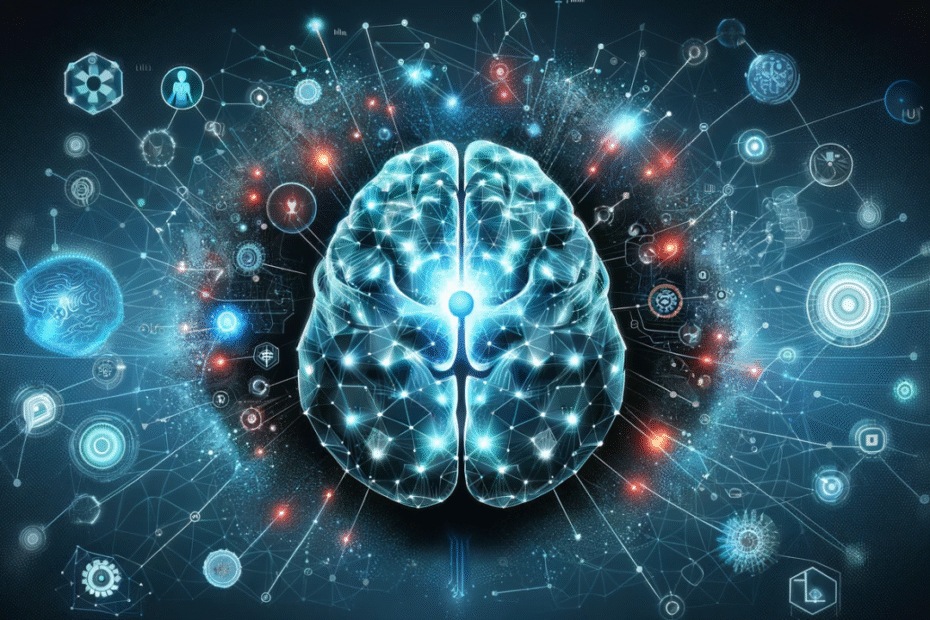bcis machine learning dysautonomia, you already know—it’s not easy.
Dizziness, sudden heart racing, random fainting, and that constant tired feeling… It’s frustrating, scary, and unpredictable.
But something new is bringing real hope.
A smart combo of BCIS and machine learning is now helping people manage symptoms before things get out of control.
Let’s break this down in a simple way.
So, What Is Dysautonomia?
Dysautonomia messes with your body’s autopilot—the part that’s supposed to handle things like:
- Heart rate
- Breathing
- Digestion
- Body temperature
For people with dysautonomia, those automatic systems stop working right. Some feel dizzy just standing up. Others have trouble eating or even walking.
It can hit anyone, but many young women are affected—especially with a type called POTS (Postural Orthostatic Tachycardia Syndrome).
And What’s BCIS?
BCIS stands for Brain-Computer Interface System. Sounds futuristic, right?
Basically, it’s a device that reads your brain signals and connects them to a computer or AI system. It helps doctors and patients see what’s going on—before things go wrong.
Machine Learning Makes It Smarter
Now here’s where it gets really interesting.
Machine learning is a form of artificial intelligence (AI). But unlike regular tools, it actually learns. It looks at your data, finds patterns, and gets better over time.
When you combine BCIS with machine learning, you get a smart health assistant that watches your symptoms, learns what your body does, and warns you before something bad happens.
A Quick Look at How It Works

Think of BCIS as a smart bridge between the brain, nervous system, and technology.
- It collects signals from the body — such as heart rhythms, nerve responses, and brain activity.
- Machine learning then analyzes these signals, spotting patterns too subtle for doctors (or even patients) to notice.
- Over time, the system learns your unique “autonomic fingerprint” and can respond instantly with personalized strategies.
For dysautonomia patients, this could mean receiving a gentle warning before a dizzy spell, automatic adjustments to wearable devices, or even tailored breathing exercises triggered at the right moment.
Real-Life Story: Meet Aisha
Aisha, 23, has POTS and used to faint almost every day. Classes were tough. Going out with friends was a maybe.
After getting the bcis machine learning dysautonomia system, things changed.
Within two weeks, it started predicting her episodes. The alerts gave her time to sit or hydrate.
Her fainting spells dropped by 80%. Now she’s back in class—and back to living her life.
Another Real-Life Scenario
Let’s say Sarah has Postural Orthostatic Tachycardia Syndrome (POTS), a common form of dysautonomia. Whenever she stands up quickly, her heart races, and she feels faint. With BCIS machine learning:
- Continuous Monitoring – A small wearable records her heart rate, blood pressure, and brainwave activity.
- Pattern Detection – The system notices that Sarah’s fainting episodes usually follow a specific sequence of signals.
- Predictive Alerts – The BCIS sends a gentle vibration to her wrist 15 seconds before a likely episode.
- Automated Support – Her smart compression stockings subtly increase pressure to improve blood flow, reducing her symptoms before they escalate.
In Sarah’s case, this transforms her from feeling “helpless and reactive” to “informed and proactive.”
Why This Is a Big Deal
Let’s be real—most health trackers just show you numbers. This system? It gets to know you.
Instead of tracking basic info, it learns how your body works. That means:
- Personalized alerts
- Early warnings
- Less guesswork
It’s like having a mini health expert with you all the time.
Why Machine Learning Makes This Revolutionary
Traditional dysautonomia treatment often involves trial-and-error: adjusting medications, lifestyle, and diet until symptoms improve. But the autonomic nervous system is highly complex, and changes can take weeks to show results.
Machine learning changes the game by:
- Adapting in real time instead of waiting for scheduled doctor visits.
- Personalizing treatment based on your unique data rather than generic guidelines.
- Spotting invisible triggers, like certain times of day, stress levels, or temperature changes.
It’s like upgrading from a paper map to GPS — still aiming for the same destination (better health), but with real-time guidance and rerouting when necessary.
Simple Visual Breakdown
What Else Can It Help With?
This isn’t just about dysautonomia.
The same tech could help people with:
- Epilepsy (by predicting seizures)
- Parkinson’s (by detecting tremors early)
- Anxiety (by catching early stress signals)
- Fatigue-related conditions (like ME/CFS)
The more it’s used, the better it gets.
Are There Any Challenges?
Sure. No system is perfect yet. Some hurdles include:
- Making wearable devices more comfortable
- Protecting patient data
- Getting medical approval everywhere
- Making it affordable
Still, it’s moving fast—and more trials are already happening.
The Future Possibilities
As BCIS tech advances, we could see:
- Home-based neurofeedback therapy that retrains faulty autonomic responses.
- Closed-loop devices that automatically correct blood pressure drops.
- Symptom diaries that write themselves, removing the burden from patients.
- Predictive models for flare-ups, helping patients plan activities with confidence.
This isn’t just about reducing symptoms — it’s about returning independence to people whose lives have been hijacked by an unpredictable condition.
Final Thoughts
For people with dysautonomia, every day can feel like a gamble.
Will I feel okay today? Will I make it through this meeting? Can I even get out of bed?
With bcis machine learning dysautonomia, that fear starts to fade.
It’s not just about high-tech gear—it’s about giving people a way to live, not just survive. And for the first time in years, many are finally getting a chance to feel hopeful again.
FAQs: BCIS Machine Learning Dysautonomia Breakthrough
1. What is dysautonomia?
Answer:
Dysautonomia is a group of disorders that affect the autonomic nervous system. This system controls things your body does automatically—like heart rate, breathing, and digestion. People with dysautonomia often feel dizzy, tired, or faint without warning.
2. What does BCIS stand for?
Answer:
BCIS means Brain-Computer Interface System. It’s a smart tech that reads brain signals and connects them to computers or devices. In healthcare, it helps track body functions and send helpful alerts.
3. How does BCIS help with dysautonomia?
Answer:
The BCIS system uses sensors to track your body signals in real time. It sends that data to an AI system that learns your patterns. If it detects signs of a fainting spell or other symptom, it alerts you before things get worse—so you can take action early.
4. What is “bcis machine learning dysautonomiat”?
Answer:
It refers to the combined use of Brain-Computer Interface Systems and machine learning to help people with dysautonomia. Machine learning allows the system to recognize personal health patterns and give early warnings, making life safer and easier to manage.
5. Who can benefit from this technology?
Answer:
People with different types of dysautonomia, including POTS, neurocardiogenic syncope, or pure autonomic failure, may benefit. It’s also promising for those with epilepsy, Parkinson’s, anxiety, or chronic fatigue.
6. Is this technology available to the public?
Answer:
Not yet everywhere. Most BCIS machine learning systems are still being tested in research settings or trials. But with fast progress, they could become widely available soon.
7. Is it safe to use?
Answer:
Yes, early results show it’s safe. The sensors are non-invasive and designed for daily use. Like any medical device, proper setup and monitoring by healthcare professionals are important.
8. How does the system know when something is wrong?

Answer:
The AI part of the system looks at patterns in your heart rate, blood pressure, and even brain activity. Over time, it “learns” what’s normal for you—and what’s not. If something looks off, it sends a warning.
9. Will it replace doctors?
Answer:
Not at all. This system is a helpful tool—not a replacement. It gives both patients and doctors better insights, so care becomes more personalized and proactive.
10. Can this system work with phones or smartwatches?
Answer:
In the future, yes. Some developers are working on integrating BCIS data with mobile apps or wearables. That way, alerts and advice could pop up right on your phone or watch.
